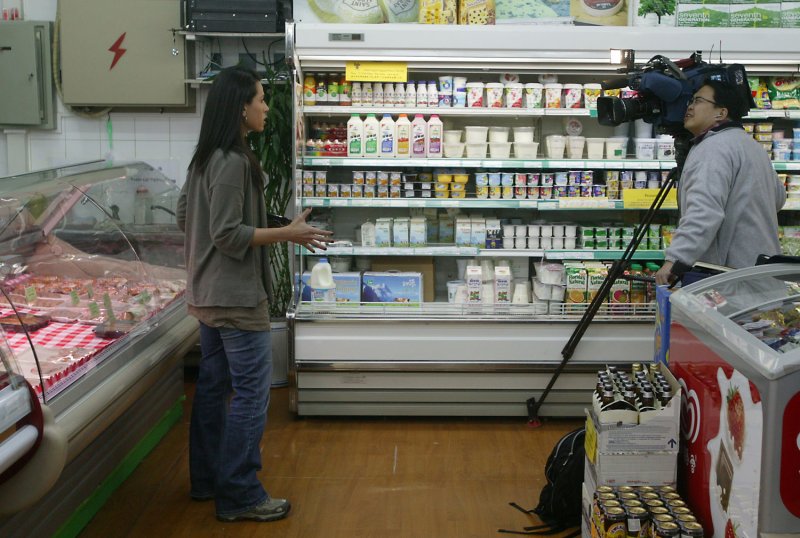The look of grocery store aisles may change as retailers discover pairing certain items boosts sales, a Texas A&M University professor says. (UPI Photo/Stephen Shaver) |
License Photo
Ever wonder why bananas have started showing up in the cereal aisle, or why soft drinks are stacked across from the chips? It could be that retailers are trying to get you to buy more than you had planned.
Retailers are changing the way they think about loss-leaders and product management, says Venky Shankar, professor of marketing at the Mays Business School at Texas A&M University.
"In general, placement can lift the sales of different items," Shankar said in a recent interview. "It's true across the board but the amount depends on categories."
The model is applicable on products from clothing to electronics, he said.
Shankar and colleagues studied product placement in 170 stores. What they found was if chips and soft drinks were displayed opposite each other, soft drink sales increased as much as 9 percent. The opposite, however, was not true: Placing the two opposite each other did not have much impact on snack sales.
"It depends on what the consumer comes in for. If you are shopping for chips, you may remember you get thirsty when you eat them, so you buy soda," Shankar said. "But if you stop at a gas station because you're thirsty, you probably aren't going to buy chips."
The economy has forced retailers to look for new ways to increase narrow profit margins. Shankar said the research indicates loss-leaders are still a good way to bring people into stores and pairing the sale items with those that are not on sale is a good way to make up the discounts.
"A number of categories are naturals -- milk and cereal, orange juice and any snack," Shankar said. "They're not necessarily consumed together but they are bought together. People like to buy them together. Those are the things that will benefit."
The biggest surprise, he said, was finding placement of diapers near beer and wine also worked. The trick for the retailers is to analyze the neighborhood and customer preferences, enabling them to maximize category management.
"Retailers are handling between 20,000 units to 100,000. What happens is they need some simplification so they use the same basic layout, banking on the same customer shopping in multiple locations," Shankar said. "What they need to do is balance between keeping a general layout but at the same time fine-tuning certain aisles. Retailers struggle a lot. If you have to manage 30,000 to 50,000 items, it's a lot of work."
Shankar recommended retailers start experimenting with pairings on a test basis and keep track of the results.
"Shoppers start liking it because their shopping becomes more convenient," he said.










